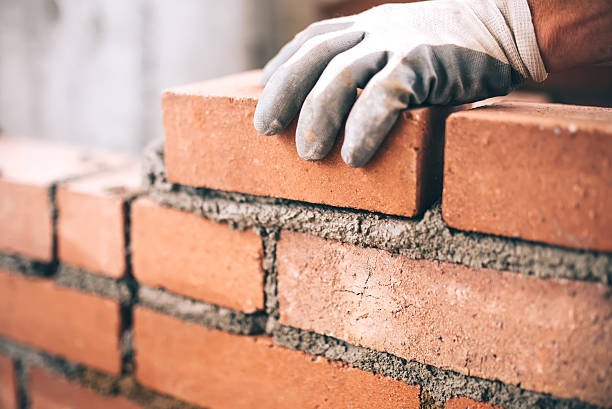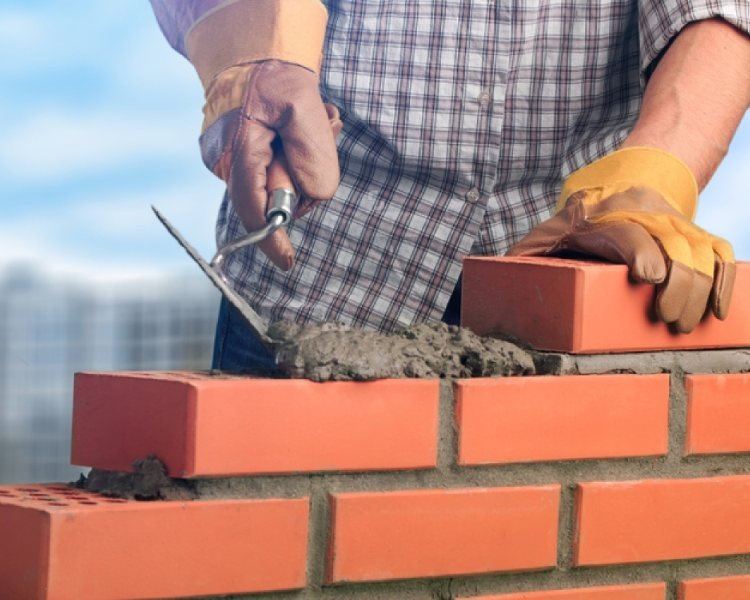Professional Step Repair Services: Ensure Security and Sturdiness
Opening the Keys of Sustainable Stonework Construction Practices for Eco-Friendly Buildings
Among the myriad strategies to green structure, lasting stonework building stands out as a reliable and sturdy method that holds a wide range of untapped possibility. From the selection of materials to innovative construction strategies, the secrets to achieving sustainability within stonework construction are diverse and fascinating.
Advantages of Lasting Masonry Building
Welcoming sustainable masonry building practices not just reduces environmental impact however likewise uses long-term economic benefits to contractors and communities. By utilizing products like recycled blocks, blocks, and rocks, contractors can substantially lower the carbon impact of their tasks while advertising source efficiency. Furthermore, sustainable masonry building and construction methods, such as correct insulation and thermal mass properties, can boost power effectiveness within structures, causing lowered functional expenses with time.
In addition, the longevity and durability of stonework structures add to long-term financial advantages. Structures created making use of lasting stonework practices typically call for much less repair and maintenance, equating to cost savings for builders and building owners. The long life of masonry materials also makes sure that frameworks stay secure and safe, reducing the demand for frequent restorations or substitutes.
Eco-Friendly Stonework Products
Using environment-friendly stonework materials is a pivotal action towards boosting the sustainability of building techniques and decreasing ecological influence while optimizing long-lasting economic advantages. Sustainable masonry materials are sourced, produced, and made use of in a fashion that reduces total ecological impact. Products such as recycled bricks, redeemed rock, and sustainable concrete blocks are ending up being increasingly prominent choices for eco-conscious builders. Recycled bricks, as an example, not just draw away waste from landfills however also require less energy to generate compared to brand-new bricks. Reclaimed stone offers a special visual charm while minimizing the demand for new quarrying. Lasting concrete blocks integrate recycled aggregates and may feature improved insulation residential or commercial properties, adding to energy effectiveness in buildings.
Additionally, all-natural products like adobe, rammed planet, and straw bales give excellent thermal mass residential or commercial properties, reducing the need for home heating and cooling down power. These products are typically in your area available, advertising regional economies and lowering transportation-related carbon discharges. By selecting environmentally friendly masonry products, building and construction jobs can significantly reduce their ecological footprint and add to the development of healthier, extra sustainable built environments.
Energy-Efficient Stonework Strategies
Power effectiveness plays an essential function in improving the sustainability of stonework construction techniques. One key energy-efficient stonework strategy wikipedia reference is the usage of thermal mass, which includes incorporating thick materials like concrete or brick into the building's framework to soak up and store heat.

Developments in Sustainable Masonry
Current developments in lasting masonry methods have actually brought about cutting-edge methods that are improving the construction industry. One such development is the development of self-healing concrete, which utilizes microorganisms embedded within the concrete to heal splits autonomously. This innovation not just lowers maintenance expenses however also enhances the durability of stonework frameworks, adding to their sustainability.
Another notable advancement is making use of recycled accumulations in stonework building - masonry contractor. By incorporating materials such as crushed ceramic waste or recycled glass into concrete blends, building contractors can minimize the ecological impact of construction jobs while preserving structural honesty. This practice not only diverts waste from land fills yet additionally saves natural deposits, making it a crucial improvement in sustainable stonework building and construction
Furthermore, the integration of electronic layout tools, such as Structure Details Modeling (BIM), is changing the method stonework structures are prepared and created. BIM allows for more exact estimations, decreased product waste, and enhanced power effectiveness, inevitably resulting in more sustainable building practices. These advancements collectively indicate an encouraging future for sustainable masonry building in the period of environmentally friendly structures.
Future Trends in Masonry Sustainability
With the innovative strides made in lasting stonework practices, the future fads in masonry sustainability are poised to further transform the building market. Among the crucial fads forming the future of masonry sustainability is the increased combination of modern technology. Developments such as Building Details Modeling (BIM) and virtual truth simulations are being used to Learn More Here maximize stonework construction processes, resulting in lowered material waste and boosted energy effectiveness in structures.
Additionally, the development of novel sustainable materials is set to play a considerable role in enhancing the eco-friendliness of masonry building and construction. masonry contractor. Developments like self-healing concrete, recycled accumulations, and bio-based binders are acquiring grip for their ability to minimize ecological influence while preserving architectural honesty

Conclusion
Finally, lasting masonry construction techniques use countless benefits for environmentally friendly buildings. By utilizing environmentally friendly products and energy-efficient techniques, stonework can contribute to a much more sustainable developed environment. Developments in lasting masonry are constantly being developed to further enhance the environmental performance of buildings. Looking in the direction of the future, the trend of masonry this post sustainability is expected to expand, leading to even more eco-friendly and energy-efficient building methods in the years to come.